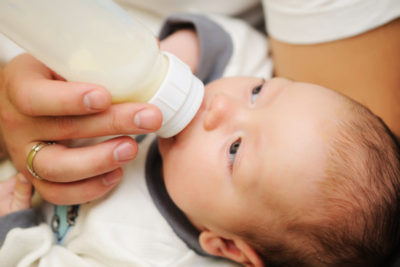SCU Students Develop Sensor for Testing Bacteria in Breastmilk – Part 2
By Christina Muchmore
The last blog introduced the “Milk Gals,” from Santa Clara University, a team of five women looking to develop an alginate-based sensor strip for testing if E.coli bacteria is in donated human breast milk (DHM). After learning about the problem and history of the team in part one (click here to read), part two of this blog will show the details behind their project, how they continued to work through quarantine caused by the COVID-19 pandemic, and where they hope to see the MilkGuard in the future.
Ariana Haddad, a recent graduate from Santa Clara University, describes how the MilkGuard works: “It’s made out of alginate material with chemicals inside that react with the potential bacteria in the breast milk so that it will produce color. Ideally, how it’s supposed to work is you stick the strip in the breast milk, or you put breast milk on the strip, and if there are bacteria, the strip will turn blue.” The more bacteria, the darker the blue, quickly signaling what is safe and what is not. Team member Emily Brogan summarizes the chemical process behind their sensor strip further: “Overall, it’s just breaking down the X-Gal substrate and then making a blue precipitate so based on the amount of bacteria that are in the milk, there is more Beta-Gal enzyme to breakdown the X-Gal substrate, and that’s why there’s a darker blue color.”
The team experimented on how to get the sensor more sensitive in showing vibrant shades of blue with a lot of bacteria, but in the low levels. They made a color metric scale to show the direct correlation of the amount of bacteria to the shade of blue, enabling them to graph the intensity of color and concentration of bacteria. Their goal was to use a layered paper-based design foundation and move forward in making an alginate strip sensor. This modification would allow anybody to use the sensor, not just trained personnel.
When the coronavirus pandemic forced everyone to leave campus and go home in the middle of the semester, the Milk Gals didn’t lose heart in finishing their project. Instead, they modified their work to focus on using the COMSOL Software to create a model of the chemical reaction when the sensor initially touches the milk.
The Milk Gals have big plans for the future of MilkGuard. They mentioned areas of growth increasing the sensitivity for E.coli testing so they can start using in locations where E.coli is prevalent. Ariana says, “If we can validate our results detecting E.coli, we can use it as a roadmap to develop the sensor to detect other bacteria.” Eventually, they hope the MilkGuard strip can be used in different industries, like water or dairy milk, expanding their efforts and research to help even more people.


Recent Comments